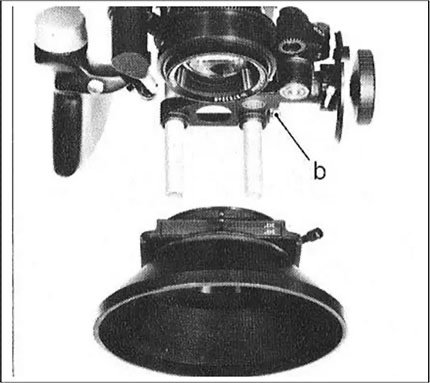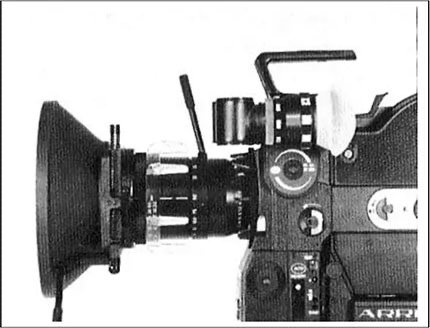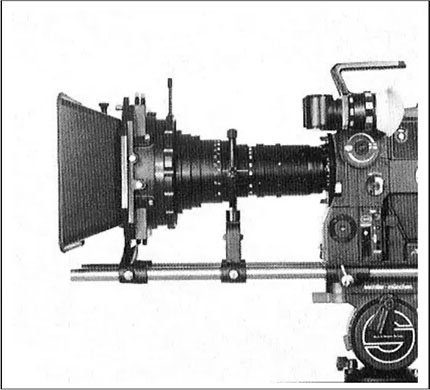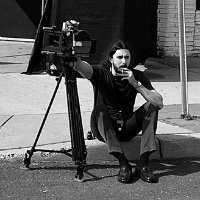-
Posts
61 -
Joined
-
Last visited
Posts posted by Matthew J. Walker
-
-
@Dom Jaeger You were correct. A tooth on the belt skipped which was causing the timing issue with the shutter. Very simple fix as you suggested. And @Mark Dunn the technician also confirmed to me that it still would have been safe to run the camera with the skipped tooth. It’s all fixed now. Thanks guys.
-
4 hours ago, Dom Jaeger said:
Yes I would err on the side of caution and have it checked before running it again.
I'm bringing it to get checked out tomorrow, thanks Dom!
-
5 hours ago, Dom Jaeger said:
Sounds like the belt slipped. On SR1s and 2s the motor stops in a fixed position so the belt timing determines the parking position. Should be an easy job for a tech to reset, though the belt may need replacing if teeth have been stripped or it's simply deteriorated.
Thanks! Would running the camera in it’s current sate cause further issues or would you suggest not running it until I bring the camera to a technician? Manually rotating the mirror shutter after each take would not be the worst thing in the world, however the last thing I’d want would be to cause any further mishaps or potential damage to any camera mechanisms.
-
After shooting with my SRII at 150 frames per second accompanied by some new unusual noise, I switched off the camera and noticed the mirror shutter had not stopped in the open position when the camera is powered off, but instead stopped closed. I'm unsure, but I may have forgotten to engage the roller on the take-up side of the coaxial magazine, which in the past has simply led to a jam, however the film that was shot seemed to have spooled normally upon removing the film from the magazine. I usually don't make mistakes like that but again, I'm unsure. Now as stated in the user manual, "each time the camera is switched off the quartz controlled motor stops the mirror shutter in such a position that the finder is open for viewing". This was always the case with my camera and suddenly this has changed. When looking through the film gate, light can be seen coming through the lens, however when looking through the viewfinder the mirror shutter appears closed. If I rotate the mirror shutter by hand, an image becomes visible through the viewfinder again but the film gate is covered by the mirror shutter. What exactly has happened?
-
The easiest way to find out if a lens can be adapted without potential removal of lens material is to simply find the flange focal distance of your lens. If the flange focal distance of the lens you want to convert is longer than the required flange focal distance of the lens mount that is on your camera body, you can adapt the lens.
If the opposite happens you cannot adapt the lens unless either:
A.) The desired lens mount adapter diameter is wider than the lens housing diameter at it's widest point.
B.) Lens housing material is removed to compensate for the wrong flange focal distance.
C.) The lens is completely rehoused.
Then the issue becomes if you manage to adapt the lens, you then have to measure the amount of rear element that is sticking out past the new flange point to ensure the rear element is not protruding too far running into the shutter mirror or sensor when mounting.
-
 1
1
-
-
You will eventually spend more on film stock and development in total than the entire cost of any 16mm camera out there so go for the best that you can possibly afford.
-
The yellow hue is just a grade they applied in post production.
-
Low contrast lighting.
-
Just get clear lenses. An anti reflective coating does not require any color tint, and the colors of the coating itself is so minimal it will not alter your perception of color. A perfect example is the Zeiss T* coating used on cinema lenses, binoculars, optical equipment, ophthalmology diagnostic machines, etc. for decades. It’s simply a thicker; Zeiss branded AR coating.
-
@Boris Kalaidjiev The matte box is on 15mm rods. I have a variation of the "bellows matte box" as per the SR II instruction manual. It is an Arri MB-10 that only takes 3x3 or 3x4 filters as opposed to 3x3 or 4x4. My SR II also came with the "Lighweight support" as described in the same instruction manual. If you can find and purchase the lightweight support I'm sure any modern matte box would work with it since they all slip onto 15mm rods as well, although keep in mind most take 4x4 filters which are quite expensive in comparison to 3x3 or 3x4 filters. Here is an excerpt from the instruction manual detailing the lightweight support as well as the different matte boxes that were available at the time.
Lightweight Support
The lightweight support has been constructed as an alternative to the tripod bridge plate, for filming from the shoulder. It is used as a support for the lightweight follow focus system as well as for the bellows matte box and is alsoused as a support for the lightweight matte box when standard lenses are used.

The light-weight support is placed in the camera shoe (19) and fastened with the knurled screw (a) which is found between the two support rods. The accessories can now bevpushed on the rods, positioned as required, and held securevby tightening the screw (b).

Matte Boxes
In addition to the bellows matte box which was developed for use with the ARRIFLEX 16 SR II (it can also be used with the 35 III), the 16 St bellows matte box can also be used; the old holder must be replaced with a new guide rail which fits onto the lightweight support. Only certain lenses can be used; the16 St universal matte box cannot be modified.
The bellows matte box is secured in two places: the upper part is fixed to a matte box rod and beneath it is supported on the light-weight support; it is secured in the required position with the screws a, b, c. It has a fixed slot and a rotatable stage for two 3" x 3" or 4" x 4" or 94 mm dia. filters. With the suitable adapter ring this matte box can be used with short focal length lenses (e.g. the 8 mm Distagon) as well as with long focal length lenses (e.g. the 10 - 150 mm Angenieux-Zoom.)

The lightweight matte box is fastened to the front of the lens with a clamp ring. To ensure a close fit there are lens adapter rings for the different lenses. For zoom lenses (with the exception of the Zeiss-Vario-Sonnar f 1.8 / 10 -100) a round rubber hood should be used; for fixed focal length lenses (and the before-mentioned Zeiss-Vario-Sonnar) a rectangular rubber tube should be used. As the lightweight matte box is used mainly for news reporting, a rotatable filter stage is unnecessary. A holder takes two 3" x 3" filter frames. Should the Vario-Sonnar f 2.8/ 10 -100 mm be used, the focus lever can be extended forwards with an extension. With fixed focal length standard lenses which have a rotatable front ring for setting the iris diaphragm, we recommend the use of the additional support for attaching the lightweight matte box to the lightweight support.

The 4" x 4" production matte box for 16 mm zoom, standard and high speed lenses, with its three filter planes, affords optimal operation versatility for motion picture productions. Two 4" x 4" filter frames are rotatable and slidable for graduated filters. The likewise rotatable filter ring which can be replaced by a reflex prevention ring, is designed to take 4 ½”, round filters. The production matte box is fastened to the support rods of the bridge plate (see also »The bridge and support plate«) or the support plate and can be swung away through 90° to change the lens.

-
The eyepiece of the camera is similar to a Lensmeter in the sense that you must first adjust the eyepiece to to your eye. Not everyone's distance or near vision is the same. So focus the lens onto an object that is precisely the same amount of meters the lens reads, then focus the camera eyepiece until the image on the ground glass is crystal clear. Try that first, then move on to step two.
-
I've always used 3x3 filters in my bellows matte box pushed right up to the lens and never had any issues.
-
NEVER spread canned air into any part of the camera body, only in the the magazine!
Here's a quote directly from the Arriflex SRII manual
QuoteIn the 16 SR II instead of the conventional ground glass a fibre optic viewing screen is used to reproduce the reflex image. With the fibre optic viewing screen definition is better, especially with stopped down lenses, as no ground glass grains are visible.
If this fibre optic viewing screen is hit with compressed air it will almost definitely get damaged.
-
 1
1
-
-
23 hours ago, aapo lettinen said:
blackmagic design has very shitty quality control on their products. for example in a movie I am working on there has been three Ursa Mini G2's and only one of them has worked correctly so far. the second one has errors and freezing multiple times a day, especially when shooting in sub zero temperatures. One of them was broken literally right out of the box, it did not turn on at all and had to be returned immediately. the third one is working correctly so far.
I have never seen a movie camera being broken right out of the box. Every manufacturer in the World at least checks that their product can be turned on before it is shipped... well, Blackmagic does not?
I've had a Blackmagic camera spontaneously stop reading the SSD, then begin reading it again, but unable to write any data to it. Shortly after the screen went half white with random black horizontal lines as if the zebras were picking up blown out highlights, yet only on half of the screen. Upon turning the camera off then on a few times it magically began operating normally. As If it couldn't have been any closer to a nightmare, I happened to be recording video at a location that was being rented on someone else's dime. Not fun.
-
7 hours ago, Uli Meyer said:
Shot on 200T, no filter: If you are scanning the negative and grade digitally, no need to use 85B filters.
Very nice images! This just blew my mind! So you're telling me I don't need to worry about that annoying 2/3 stop of light anymore because I never had the balls to use tungsten film during the day in fear that it might be a waste of film?
-
If the underexposed areas are too noisy, the first and most obvious approach would be to record with the lens at its widest aperture. You could also record with the lens at its widest aperture in combination with a high ISO setting, though I should note that many, including myself, would agree that bumping up the ISO is a very lazy thing to do and doesn't create a very attractive result most of the time. Now if you are not using a fast lens, or perhaps you are using a fast lens yet the shadows are still far too underexposed for the sensor to pick up cleanly, the two arguably best options would be to completely clip the shadows off in editing or add fill light to bring up the exposure of the dark areas in real time. You could even try using a low contrast filter in front of the lens. They were used religiously in the film days to pull more detail out of the shadows. The most valuable thing I've learned even with my intermediate experience, is that you can ask all the questions you want, and you can get all the answers you ask for, but you don't really fully learn it until you test the waters. You can only visualize. And since every camera sensor handles light differently, you should certainly test the waters.
-
 1
1
-
-
17 minutes ago, Satsuki Murashige said:
There’s quite a bit of depth of field with wide lenses in the Super 16 format.
On an 8mm lens @ f/1.2 (usually T1.3), pCAM says:
Focus = 4’. DoF = 5’7” - 3’1”.
Focus = 6’. DoF = 10’6” - 4’2”.
Focus = 10’. DoF = 35’5” - 5’10”.
That’s not too bad, as long as you don’t get closer than 3’. The Circle of Confusion for these calculations is 0.0005”.
Yeah that really isn't too bad. Most Steadicam shots are probably around, say, six feet from the actor. So a four foot depth of field actually gives a lot of room to play. More than one would have expected, or maybe just more than I would have expected. You also have to consider what lens is to be used. It is well known that modern glass is obviously very consistent as it's machine made whereas older lenses are handmade, so I suppose this would fall into what one would probably call lens theory. Sorry Joshua Silverlock if you haven't disowned this thread yet, we sort of hijacked your post, though It's in the best interest of your project I promise!
*Ignores original post to read all of the overtly entertaining debates*
-
On 3/12/2021 at 4:03 PM, Tyler Purcell said:
With Steadicam, you don't want to be running at F2 because you can't tell if you're in focus or not on the monitors unlike with digital.
This is true. I have experience filming digitally at f/1.8 with focus peaking on and it was still difficult to maintain focus. You sort of have to do several takes regardless of whether or not you thought the take appeared sufficient. It may have appeared to be in focus on a seven inch monitor, yet when you begin editing you realize it isn't quite in focus. That's where the extra good takes come in handy. Then with film it becomes a different story. At the very least his camera will ned an HD video tap or some sort of homemade video tap. He can't control the lighting, therefore he must shoot wide open, especially if the street lamps are sodium vapor so he needs to worry about focus.
-
 1
1
-
-
How the director perceives body language should be, how the director perceives words should be spoken, or how the director perceives someone should react, are all behaviours that are acted out by actors that would not have acted in such a way that a different director was directing the picture. So the picture is a reflection of everything including the directors work, yet a director is not an artist?
-
The quote "Fake it 'till you make it" mindset is not very beneficial in the entertainment industry. It just wouldn't work. Maybe for Soundcloud rappers.
-
 1
1
-
-
@Phil Rhodes is right it's the LEDs. It usually happens with those cheap string LED lights used for Christmas trees or outdoor decoration. In fact it's not just cameras that pick this up, but rather the human eye picks this up as well. For those who don't believe me, buy a set of LED string lights, set them up in a dark room, then wave your arm left and right in front of yourself and you will actually see this ghosting yourself in real time.
-
 1
1
-
-
1 hour ago, PJ Echlin said:
I read somewhere that 250D or a daylight stock would probably be the best general stock in this situation but I wanted to get some opinions first.
I'm no professional, but definitely don't use 250D for night scenes unless you want an overly warm look (Assuming you're shooting under soft white light). Otherwise you'd need an 80A filter, effectively losing two stops of light. At that point you're at 64 ASA. Not fun. You'd be better equipped if you shot the whole thing on tungsten film, because daylight scenes would only require an 85 filter in which case you would only lose two thirds a stop of light and you'd still be at 125 ASA which is actually a very tame and versatile speed to be working with in daylight.
1 hour ago, PJ Echlin said:For continuity within the look and feel of the film, what stock would you guys suggest shooting on?
As for image continuity between 200T and 250D in particular, there really is no visible difference. When you add 50D, 500T, etc. into the mix, then you really have to think about continuity. Here's a reply @David Mullen ASC wrote to a similar question I had asked a short while ago. Yeah, the guy knows a thing or two...
On 6/27/2020 at 3:04 PM, David Mullen ASC said:The Vision-3 sticks have been designed to match each other fairly closely so color and contrast-wise, I don't think you'd see much difference, nothing that isn't correctable. 250 ASA is faster than 200 ASA so is slightly grainier.
In the days of EXR, 50D and 250D were more contrasty than the tungsten stocks.
For me, the decision whether to use tungsten stocks outdoors or for day interiors was a matter of (1) how many stocks did I want to carry, considering that some scenes would be tungsten-lit, (2) whether I'd want to pull the 85 filter for a blue cast outdoors or indoors, and how often. So roughly speaking, my tendency was to use daylight stocks (plus tungsten for night interiors and exteriors) in a generally warm-toned movie and tungsten stocks for a generally cool-toned movie (sometimes not even shooting with an 85 filter and just correcting it halfway back). Plus it also depended on whether I was keen to use 50D stock, like for a desert movie.
The other issue was day interiors -- if I wanted a warm-to-neutral look and didn't want to pull the 85 filter, then the choice was 250D rated at 200 ASA for me, or 200T + 85, so rated at 100 ASA for me, a stop difference in practical speed. But sometimes I used the LLD filter instead of an 85 filter to help gain back more speed with the 200T stock.
For example, I shot "Seven Days in Utopia" in Texas and "Astronaut Farmer" in New Mexico on daylight stocks (Kodak 50D and 250D for the first, Fuji 64D and 250D for the second) other than the 500T shots... but when I went to Vancouver to shoot "Jennifer's Body" I just used 200T and 500T. And when I did "Northfork", a winter landscape movie, I shot most of it on Fuji 125T without the 85 filter outside, with a few interiors on 400T. That movie actually only had one single night interior scene in tungsten lighting.
-
 1
1
-
-
When examining the image, It's safe to assume the camera was balanced at 3200K judging by the actual light bulb, which looks to be a clear, non-frosted forty to sixty watt soft white light bulb. Accordingly, when looking at the reflection on the left side of the eyeglasses, I can see it matches the color of the light bulb nearly perfectly. So the key light is also around 3200K. It's difficult to tell where exactly the back lights are positioned, but it's rather obvious there is one on the left and one on the right. I believe the lights were the typical cool blue color before later being shifted more towards the warmer end while editing. I say this based on the color of the blue books, the lampshade, and the cool back lights all having a similar shade of blue. One could argue the blue books having a similar color to the light source could simply be the light source hitting the books which sounds like a valid point at the surface, however when looking at the white and red books, it is evident they haven't been affected by the light source nearly as much as the blue books appear to have been. So essentially I see a camera set to 3200K, a tungsten balanced key light on his left side, a cool blue side light on his right side, as well as stronger cool blue light illuminating the books and a little shifting of the blues during the editing process. I'm sure there were some more smaller and larger light sources around as well, maybe even a light pointed at the ceiling acting as sort of a top fill light.
-
Thank you Steve for both your posts and your patience with my questions!




Any advice on which Super 16 camera to buy?
in 16mm
Posted
I love my Arriflex SR2 as it was my first and only 16mm camera; it has always been reliable. I'm forever committed to the Arri brand.